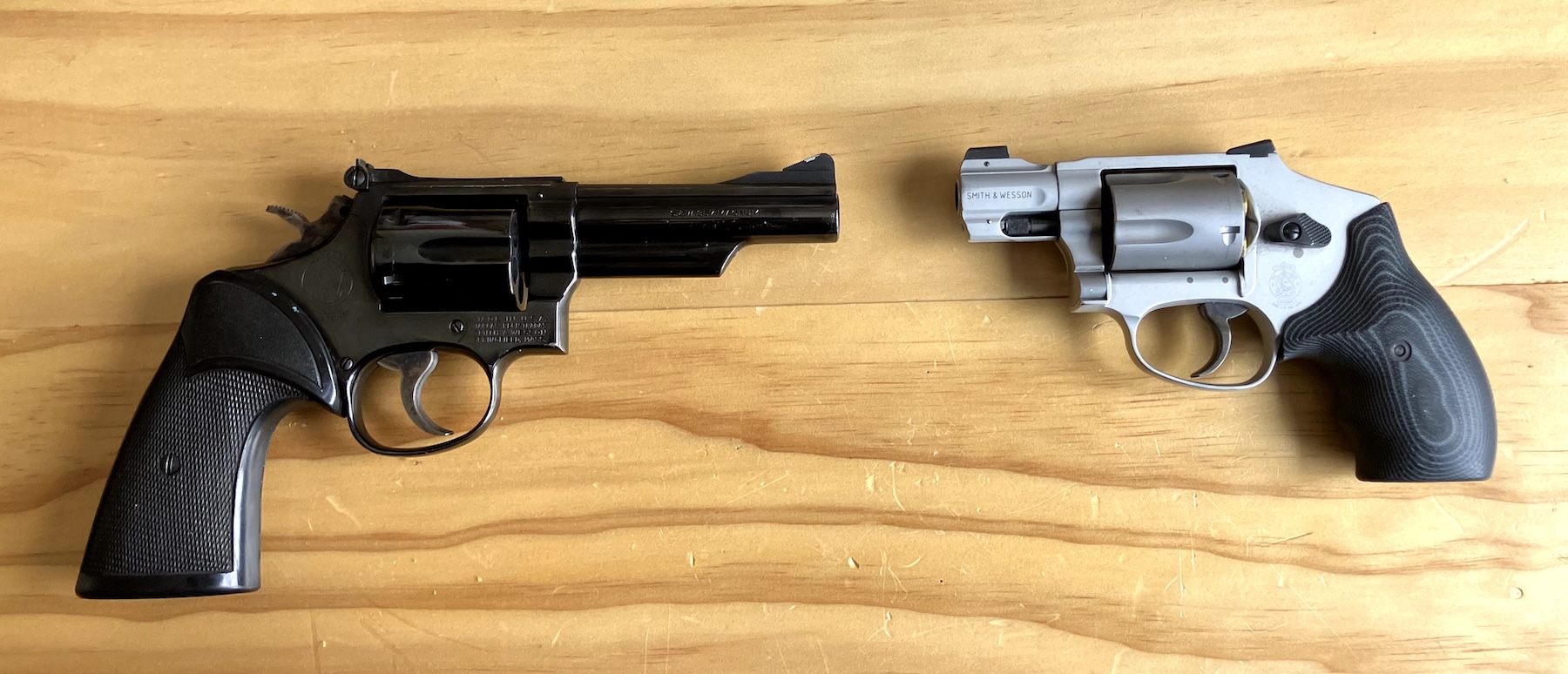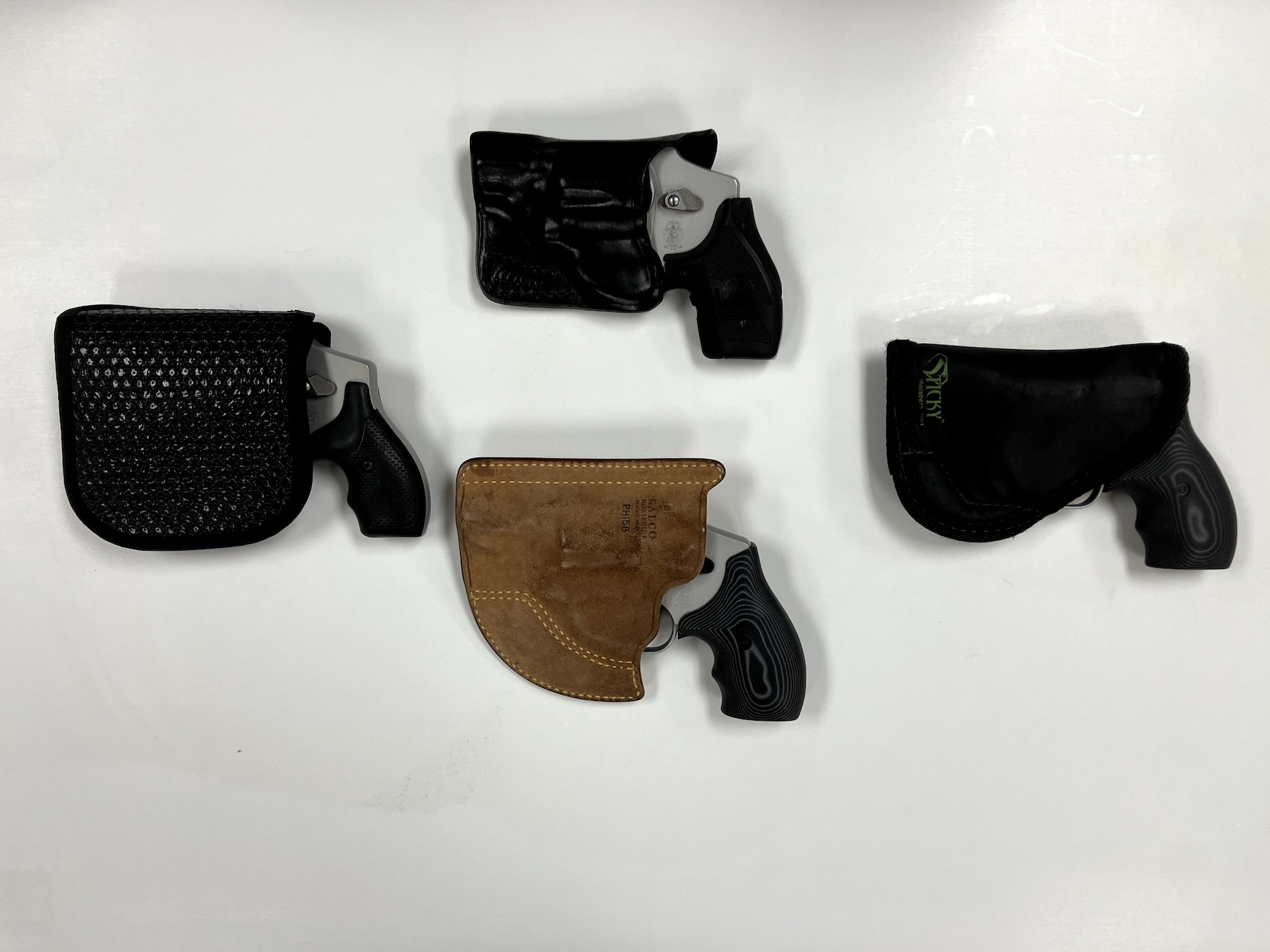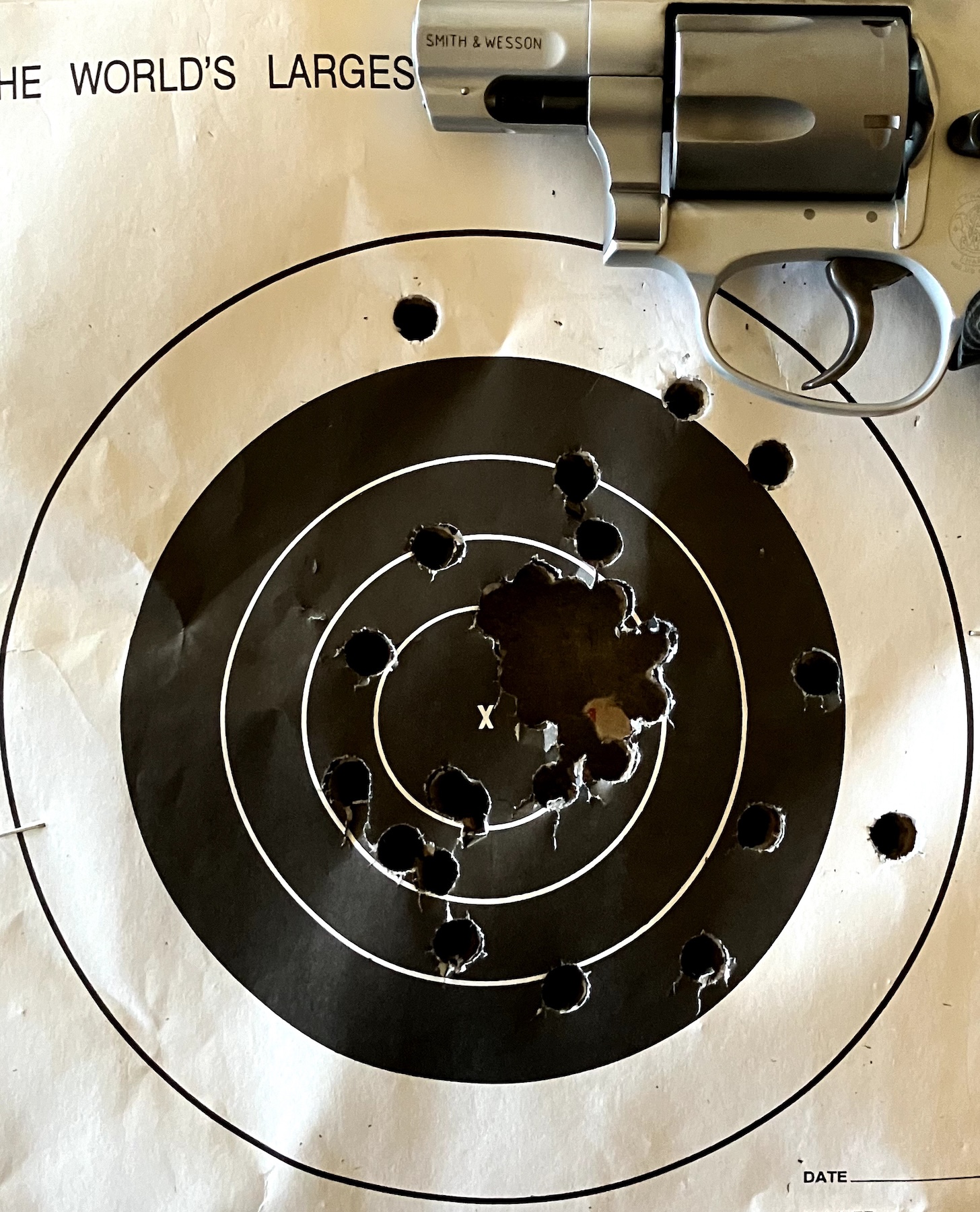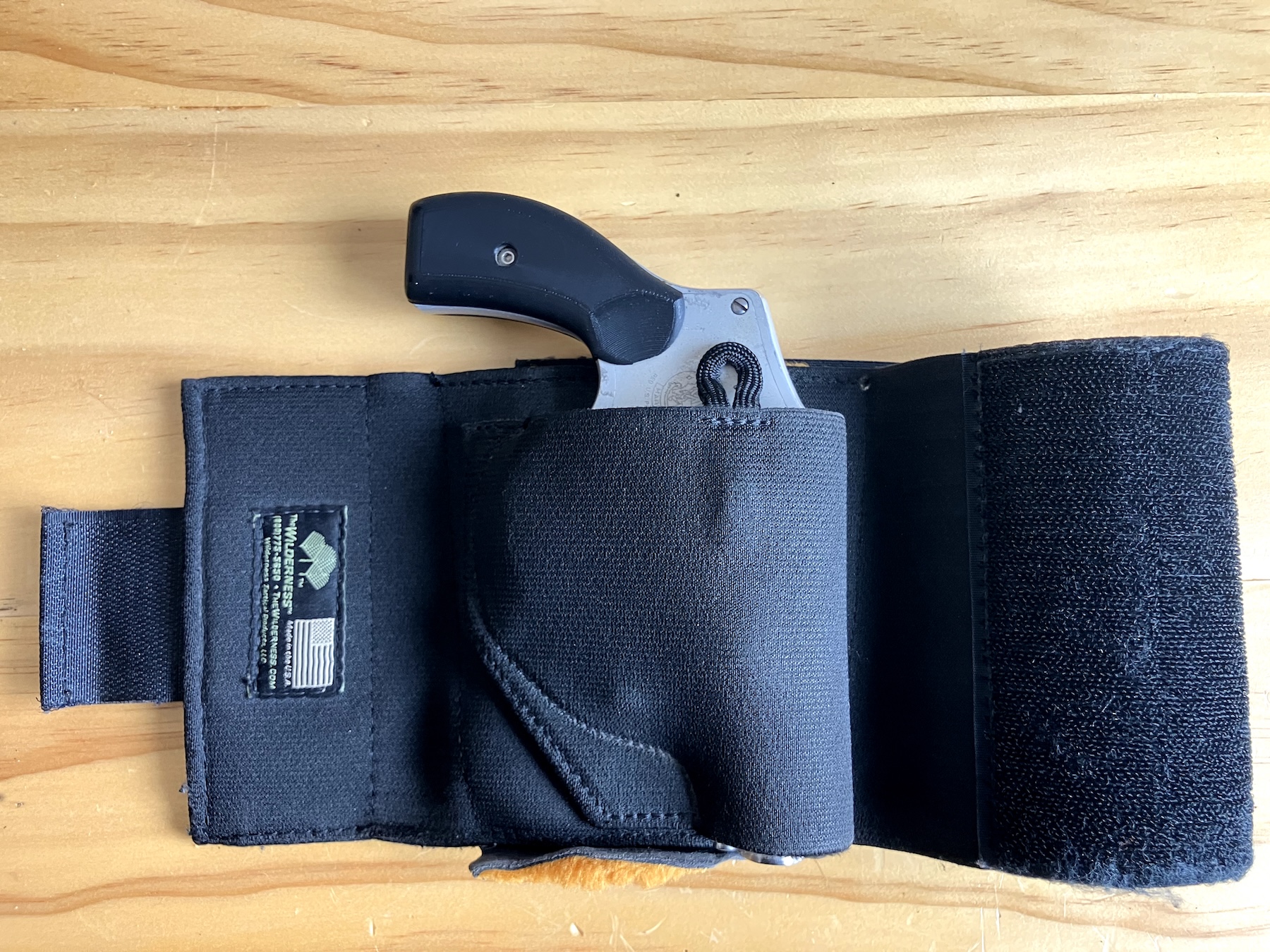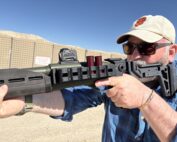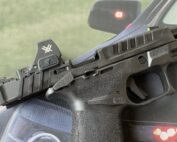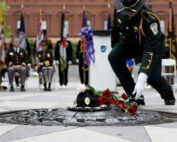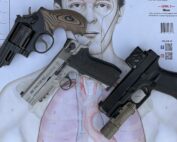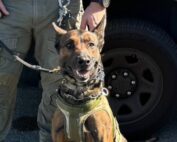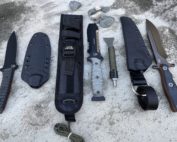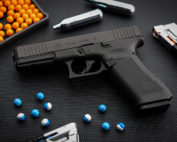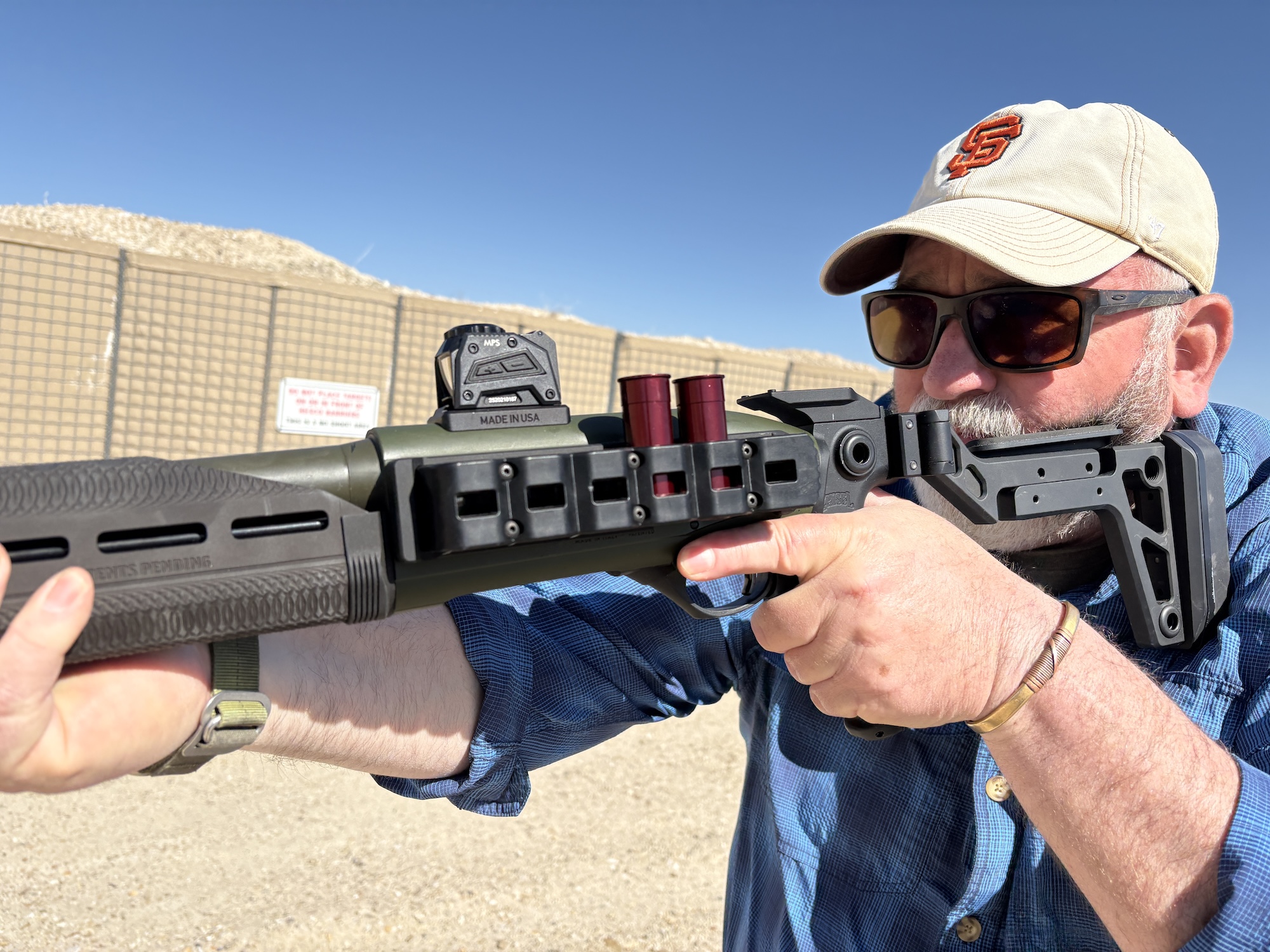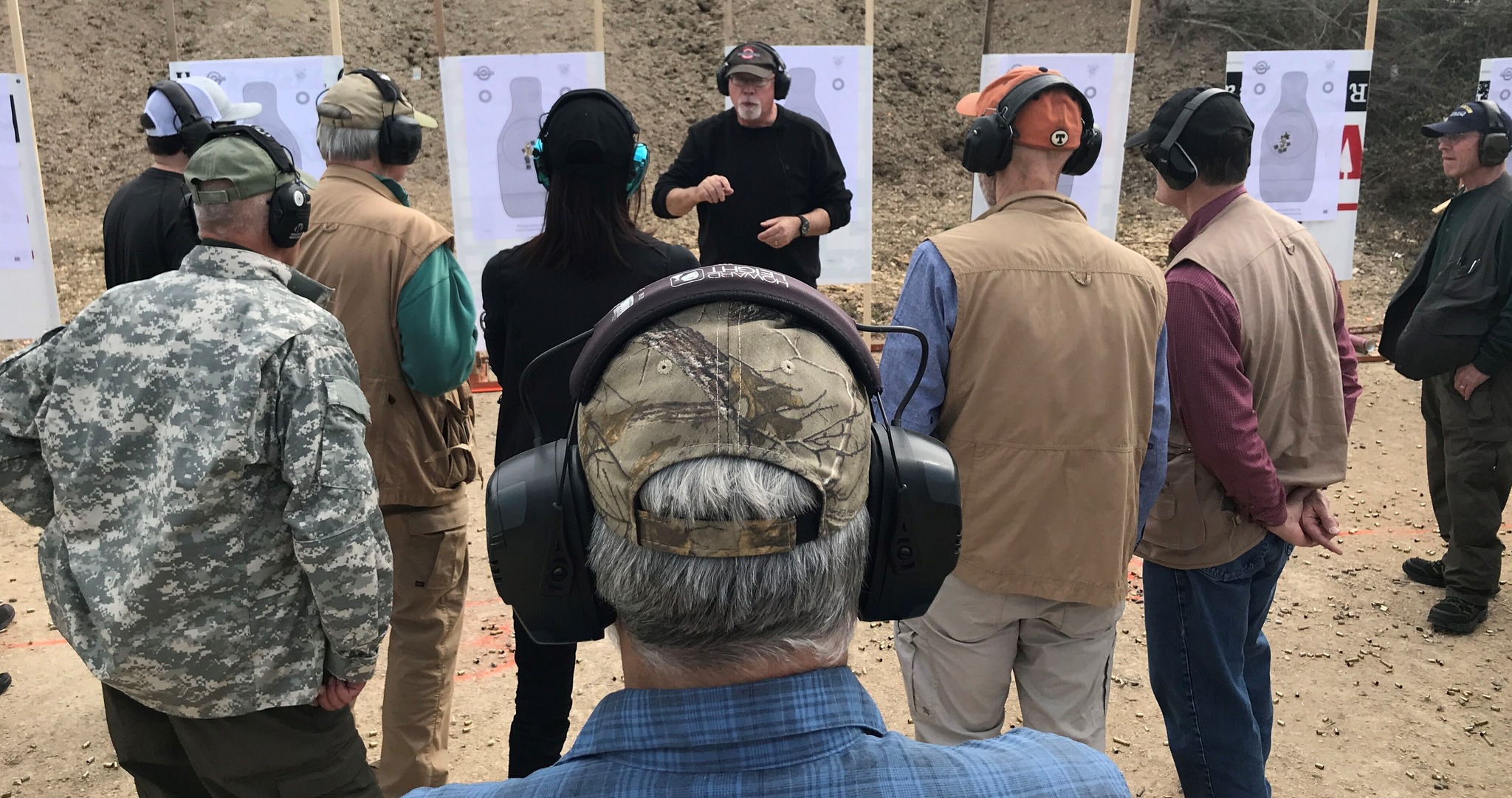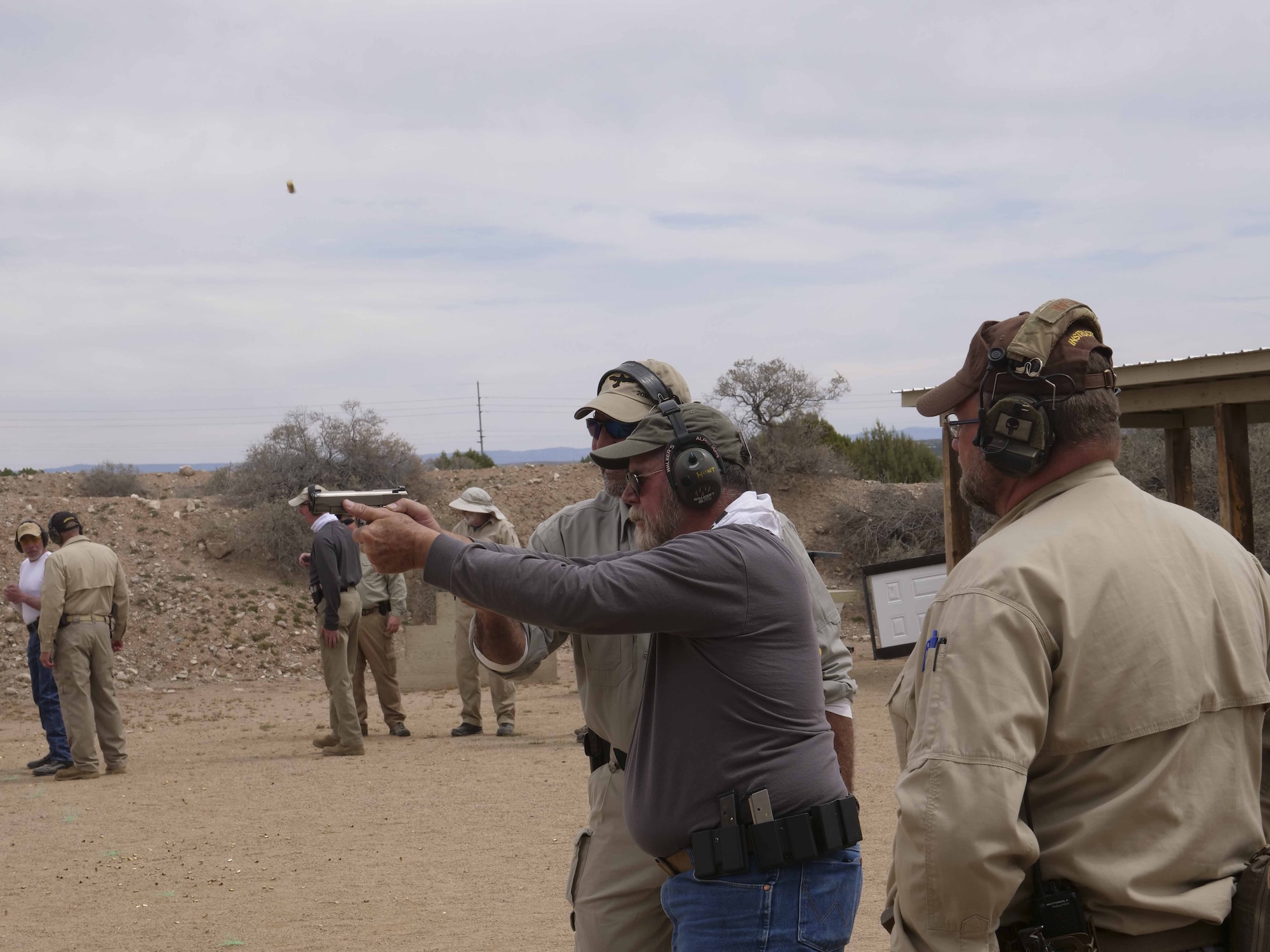
Feat-pocketcarrysetup_8295
J Frame, Speed strip, and a Wilderness DB Force Options holster.
Some people say there is a “Revolver Renaissance” going on in the shooting world. At the very least, it may be a “Revolver Revival,” with a variety of new guns, ammo, holsters, and support gear. Though the day of full-size service six-guns has passed for the police, small revolvers are still great companions on the mean streets.
When I began police work in 1995, the full-size wheel gun was on its way out of uniformed patrol work. Only a few old guys had them, and the new kids like me often went out of our way to antagonize them, saying stuff like: “Six-shooter, huh? A lot of old-timers carry them.” None of us looked like Mel Gibson in Lethal Weapon, but we thought our shiny new 9mm auto pistols made us cool.
BUGs
I soon began to see the logic of the small revolvers when carried as a backup or off-duty gun. Though many modern cops carry compact semi-autos as backups, small revolvers have advantages. The first factor is concealability. Small hammerless or shrouded hammer revolvers have round corners and soft edges. They seem to fit “just right” against your leg or calf, in a pocket or ankle holster. They are often shorter in overall length than many popular semi-autos and don’t have that angular form factor – especially when pocket-carried.

Pocket carry can be exceptionally low profile while appearing non-aggressive. Starting with your hand on the gun allows for a quick presentation.
Why?
Small revolvers are also reliable, unlike small semi-autos that are sensitive to bad ammunition, worn-out or damaged magazines, or being gripped loosely. A revolver doesn’t care about any of those things. Your trigger pull powers it and works whether your grip is good or you can use all your fingers. If a semi-auto fails to fire, it requires several manipulation steps to clear it, probably with both hands. A revolver only requires you to pull the trigger again.
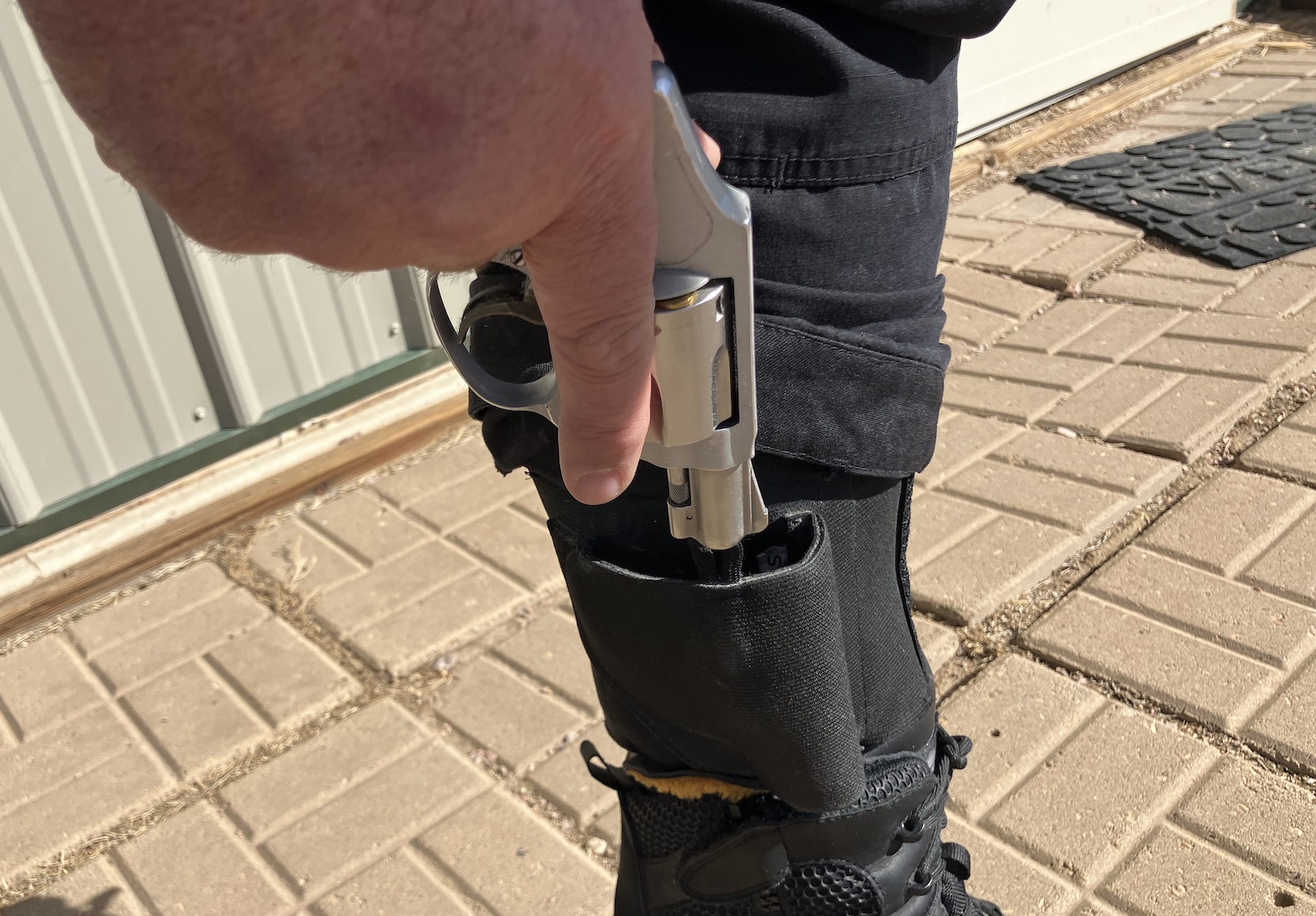
An ankle holster is a good choice if you are seated a lot, like working in a patrol or on surveillance.
Compact semi-autos can be tough to shoot for people with large hands. Small revolvers can be easily fitted with grips for any hand of any size or be tailored to the method of carry. A large variety of grips exist and can be easily changed by the shooter.
Options
Several manufacturers, such as Smith and Wesson, Ruger, and Taurus, make effective, reliable small revolvers with shrouded hammers and barrels under two inches. These are ideal as backup and off-duty guns. The sights used to be simple (and awful), consisting of a short front blade and rear channel. Now, options like S&W’s Ultimate Carry revolver series offer visible, precise sighting.
How To Carry?
Like a lot of guns, using them effectively requires some specific support gear and some forethought. How do you carry them? The two most effective ways for patrol cops are the pocket holster and ankle holster. I carried a Smith and Wesson 642 in a Desantis-brand nylon pocket holster for nearly twenty years in my support-side pocket, both on- and off-duty. I reasoned that if I needed a second gun, my strong-side hand or arm might be otherwise occupied or disabled. I made sure that nothing on my duty belt interfered with accessing the gun, and I also practiced drawing and shooting with my support-side hand. Several companies currently make pocket holsters constructed of leather, nylon, or kydex.
Pocket carry did have the disadvantage of being nearly impossible to access while seated in a patrol car, as well as frequently requiring lint removal from both holster and revolver. Stainless-steel grip screws are a must in the humid environment of a pocket, as the blued ones will rust quickly.

An ankle holster is a good choice if you are seated a lot, like working in a patrol or on surveillance in a vehicle.
Several cops and trainers I know prefer ankle holsters. The brands they use run the gamut from the old Alessi rig to Bianchi and Wilderness Tactical. Any ankle rig needs to be comfortable and have good gun retention. Stories abound of old-time cops who gave up on ankle rigs because they were uncomfortable to use for eight hours or more, as well as tales of cops losing their ankle piece in a foot chase or a fight due to a poorly designed holster. Ankle-carried guns should be as light as possible, as heavier guns may cause joint and nerve injury to joints over time. Ankle carry offers the additional advantage of being accessible while seated in a car.
Ammunition
What kind of ammunition is good for one of these little wheel guns? Subject-matter experts such as Mark Fricke and others report that most hollow point loads have erratic or no expansion from short-barreled revolvers. Many .38 Special rounds on the market are optimized for longer barrels and waste much of their powder charge in flash, blast, and recoil. These experts recommend a target round loaded with a sharp-shouldered lead wadcutter, moving about 750 feet per second. This load will cause a predictable amount of tissue damage while being controllable to shoot in a small alloy- or plastic-framed gun that weighs less than 16 ounces. Many wadcutter loads are currently available from Federal, Black Hills, Sellier & Bellot, and others.
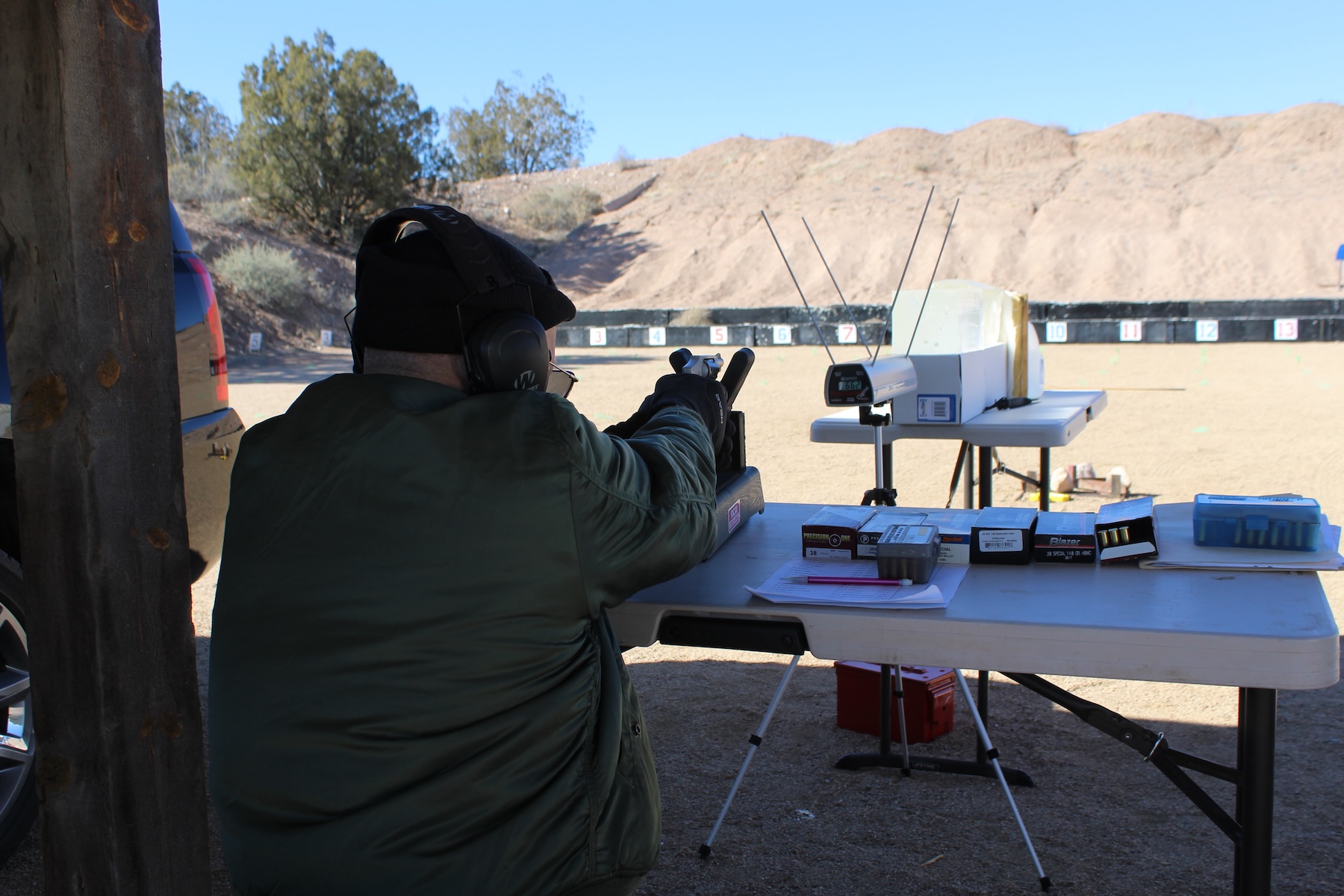
Mark Fricke is conducting penetration testing during the yearly Pat Rogers Memorial Round-Up at Gunsite.
Non-hollow point target ammo has the additional advantage of not being an “evil” prohibited round in some jurisdictions, should you choose to carry it off-duty. As an example, I recently spent some time in New Jersey, which has bans on hollow-point ammunition and magazines with more than ten rounds. I carried two five-shot Smith and Wesson revolvers loaded with 148-grain lead wadcutter target ammunition. I was complying with local laws and LEOSA, yet still effectively armed for anything I might encounter as a “regular guy” taking a trip to the shore with his family.
Final Thought
Maybe the old-timers who carried small revolvers knew something about effective backup and off-duty guns. With modern manufacturing techniques, well-made holsters, and effective ammunition, the little wheel gun will continue to be a viable choice for cops and armed citizens well into the future.
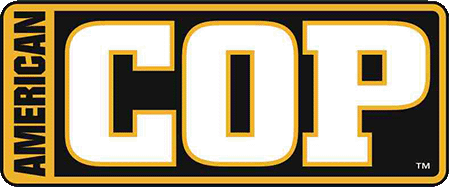

 (+10 rating, 10 votes)
(+10 rating, 10 votes)